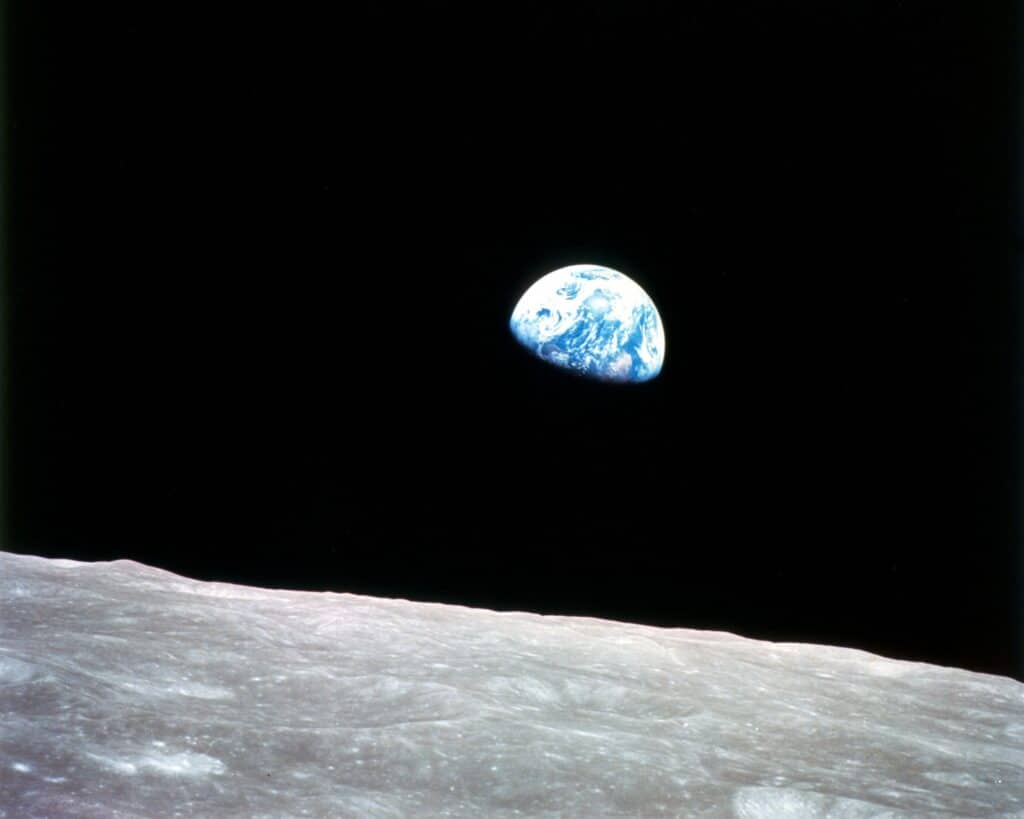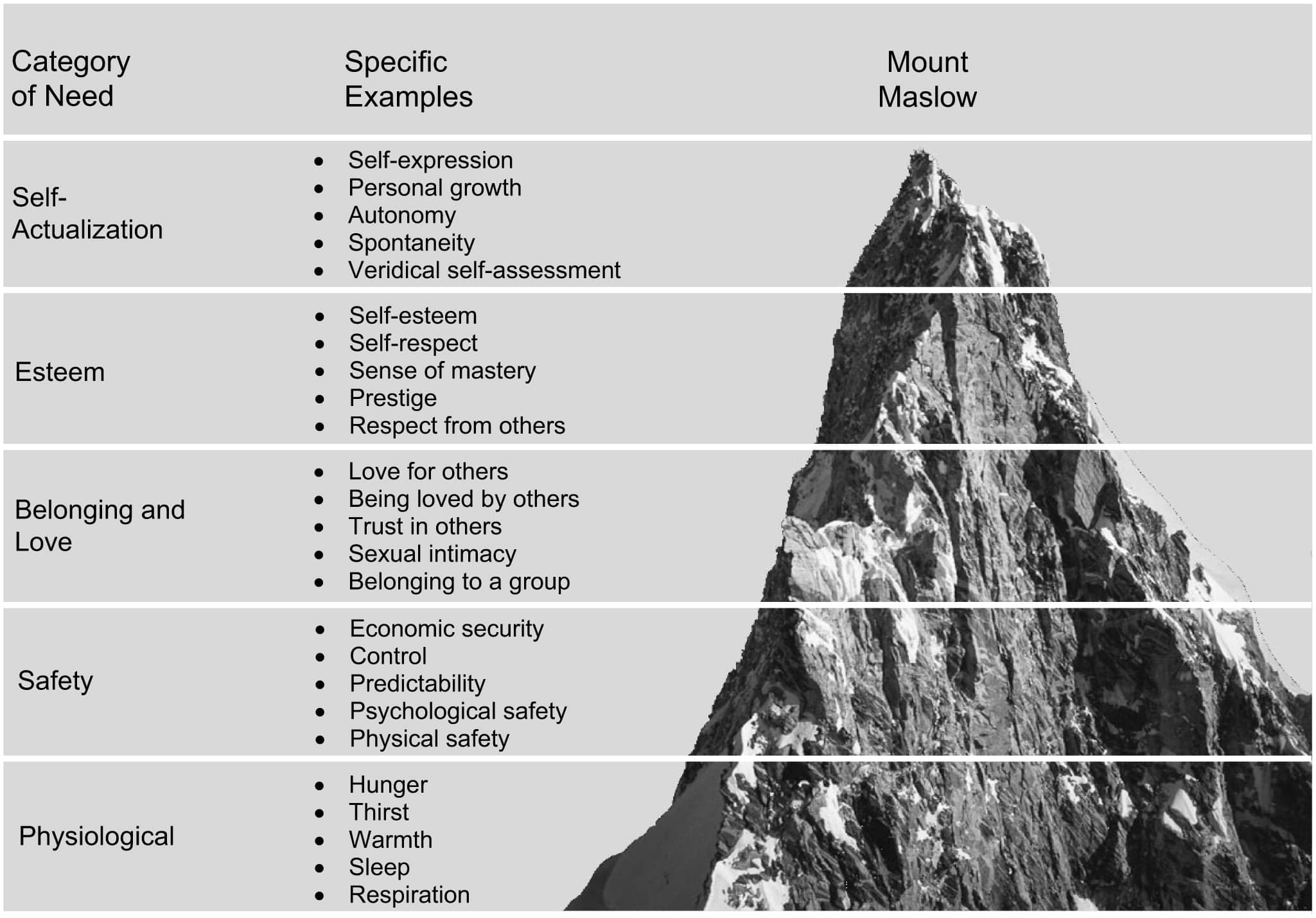The ground of our cultural landscape is always moving, quietly and imperceptibly. Country music has taken decades to change in its sounds and stories. The designs of our buildings evolve iteratively and over generations. Our spiritual relationship to nature, from the naturalist poetry of Thoreau to the nature-shaping ideology of Roosevelt, took nearly a century to evolve. Flipping through the pages of culture, it’s hard to know when something ended and something new began.
But unlike music genres and architecture, I can tell you the exact moment when modern environmentalism took hold of the public consciousness.
The 1968 “Earthrise” photo taken on the Apollo 8 mission, among the first photos of earth taken from space, immediately changed our understanding of what it meant to be a human on this planet. Seeing the Earth through the universe’s eyes, a planet whose entirety we could suddenly hold in our heads, fundamentally changed the way we measure our relationship to it.
There were famous ecologists like John Muir and conservationists like Rachel Carlson that came before that photo, but none of them compelled us to recalibrate so quickly. “Earthrise” snapped our brains to a new grid because it gave us a new ruler to measure by.

Shifts in values and beliefs slowly change the topography of our cultural landscape, but in some places we experience landslides that happen so quickly, we can lose our bearings. Cultural borders that we thought fell in one place now, strangely, fall in another, and the way we measure the distance between our values requires an update.
The spaces in which we are using old rulers to measure new things hold tremendous opportunity. These are the spaces with latent demand, waiting for someone or something to give us new units of measurement, so that we may experience a culture in the way we have been waiting to experience it.
New rulers always unlock value, and there has perhaps never been a period when so many of our rulers have been out of date at the same time.
The protracted debate over working from home isn’t really about quality of work. It’s about the fact that we cannot shift our measurement of work from people-in-seats to output-of-people, and there’s a very good reason for that.
Western culture has a unique interpretation of time. How you spend your time, how much time something costs you, deciding if something is worth your time, or if you should invest more time into it, are all linguistic reminders that time is money.
This intimate time-money relationship has also shaped our infrastructure, from hourly wages and yearly budgets to interest on loans.
Without the metaphor of money, we simply cannot talk about time. It’s such a strong mental model that it’s quite literally written into our language and systems. In their book Metaphors We Live By, linguists George Lakoff and Mark Johnson suggest that metaphors like this mediate our experiences of the world. They are the rulers by which we measure our lived experiences.
Remote work is a proven success, and a clear indicator that our work-time relationship is changing. So why is there such tension here? It comes from the fact that while our work culture has changed, our implicit measurements of it have not.
Our language and metaphors – meaning the medium through which we filter our experiences – make it impossible to decouple time from money. Using this ruler to measure the world tells us that if you cannot control time, you cannot control revenue. You could argue that without a new ruler having really taken hold, businesses and leaders simply cannot rise above the horizon to see a new possible future.
Old rulers do not get replaced easily. We build infrastructure and systems around them, buttress them with language and rituals over time, and escalate our commitments to them as a society.
A measurement is only useful when everyone can agree to it, or as Anil Seth has said, reality is just a hallucination we can all agree on. Changing our rulers, even a little, is impossible without a critical mass of people willing to change their realities at the same time. That critical mass can take generations to materialize.
Relationships are no longer just about “love”, but about self-actualization according to Northwestern psychology professor Eli J. Finkel’s incredible research on the Suffocation Model of Marriage. Yet we still use the old ruler of “love” to measure our romantic lives.

From the mid-1800s up until the 1960s, the measurement of a good marriage was love. As America became wealthier, more urbanized and social safety nets began to form, the “functions of marriage became increasingly sentimental. Its primary purpose was to help spouses fulfill needs like loving, being loved, and experiencing romantic passion—the sorts of belonging and love needs toward the middle of Maslow’s hierarchy.”
That measurement of love stays with us today, in our myths, media and marriage vows. What most people don’t consciously realize, however, is that around 1965 the culture of marriage had already changed:
“In the self-expressive era (1965–present), diverse forces—including the civil rights and feminist movements, the Vietnam War, and the rise of humanistic psychology— converged to generate the countercultural revolution, which fostered an increased emphasis on self-discovery, self-expression, and authenticity… Americans continued to look to their marriage to fulfill their love and belonging needs, but they also increasingly looked to it to fulfill needs like self-esteem, self-expression, and personal growth—the sorts of esteem and self-actualization needs toward the top of Maslow’s hierarchy.”
Looking at the steep incline of the mountain in Finkel’s Suffocation Model, one thing becomes abundantly clear – the institute of marriage is begging for a new yardstick. Love is an outdated ruler that measures the wrong thing, potentially leading us away from what we’re really searching for.
Once you see it in love, you start to see it everywhere. The 75 Hard Challenge and Bryan Johnson have emerged because status is no longer just about ease, but about sacrifice (see our senior strategist Zach Lamb‘s great thinking on this topic). Gwynneth and her disciples rose from the failures of women’s medicine to show us that wellness was no longer just about health, but about rebirth. Hotels made us measure travel in units of leisure, until Airbnb changed it to units of belonging, and now concepts like psychedelic retreats and sleep tourism are changing it to units of emotional restoration.
If your brand is in a space where old rulers are still being used, there is tremendous opportunity in teaching people a new way of measuring what matters to them. It creates new language and new context. Most importantly, it has the potential to put your brand in a consideration set of one.
Just like the Suffocation Model indicates, getting people to do the hard work of changing their perspectives may leave laggards struggling at the bottom of the mountain, but those that make it to the top experience far more satisfaction than those who never make the trek to begin with.
The concept of childhood is only a few hundred years old but once it was established during the Enlightenment, this new ruler created a cascade of new labor laws, changed the way children were depicted in fine art and literature, and led to the evolution of childhood education. Children were no longer seen as small adults, taking on adult roles and responsibilities (and oftentimes abuses). Childhood was now a protected and measured part of early life.
A great deal of our early culture around childhood was molded by philosophers like Jean-Jacques Rousseau, John Locke and Sigmund Freud who explored notions of innocence, tabula rasa (a child’s blank slate mind) and childhood traumas.
But then came children’s media in the form of Disney and Warner Brothers and they gave us some of the most powerful measures of childhood that continue to unlock value for us today, moving us from innocence and purity to new measures of imagination and awareness.
Disney cemented the ideals of childhood in the form of boundless imagination. Through cartoons like Fantasia, Snow White and the Seven Dwarves, and the magic of Disneyland and its Imagineers, a whole nation came to see a good childhood as a measure of creativity. We continue to exalt creativity in the toys we buy our children and the preschools we send them to today.
Warner Brothers saw the need for a different kind of ruler. The humor in ‘Looney Toons’ and ‘Merrie Melodies’ was far more sophisticated and subversive than anything else at that time. The artwork was strikingly modernist, the jokes were complex and satirical, and the storylines sometimes referred to current events and politics. Warner Brothers saw childhood as a measure of awareness. The belief that kids could understand and appreciate more adult themes is the same belief that fuels box office hits like the Lego Movie and Barbie today.

Interestingly, both Disney and Warner Brothers created measurements that welcomed adults into the world of children, another unique value unlock that we are still enjoying as a culture. They’re proof that every ruler we use has the potential to dampen or amplify our lived experiences.
Our measurements are our agreed-upon codes for what matters, but once they are installed into our culture, it can be very hard to know when it’s time to rethink how we measure things in the first place. Our beliefs and feelings have a tendency to move forward before we have the models to describe them and the artifacts of culture – language, norms, systems – are a lagging indicator of who we really are.
If we’re not measuring the right things anymore, that’s your brand’s opportunity to change the landscape. How we measure is how we know the world, and new rulers can not only give us new experiences, but also make us new people.




